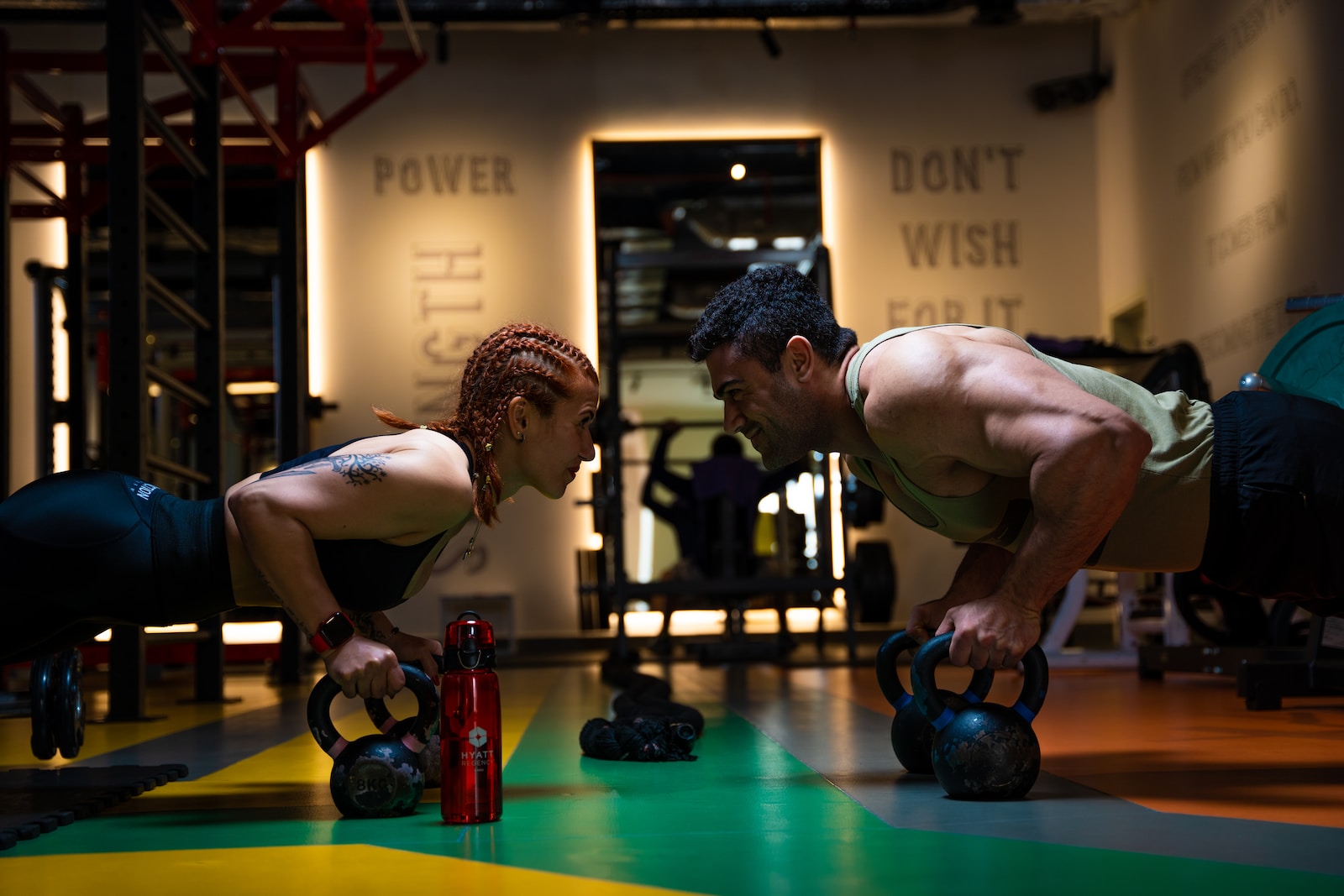Water has long been recognized as a valuable medium for exercise and rehabilitation. Aquatic workouts offer a multitude of benefits that can enhance your fitness journey, regardless of your age or fitness level. In this article, we will delve into the advantages of incorporating aquatic exercises into your fitness routine.
The Power of Water Resistance
Aquatic workouts provide a unique advantage through the natural resistance provided by water. As you move through the water, its resistance makes your muscles work harder than they would on land. This increased resistance helps to build strength and endurance while minimizing the stress on your joints. Water resistance challenges your body in a safe and effective way, allowing you to push your limits and achieve optimal results.
- Water resistance activates a greater number of muscle fibers compared to land-based exercises, leading to improved muscle tone and definition.
- The resistance of water also helps to increase bone density, which is particularly beneficial for individuals at risk of osteoporosis.
- Aquatic workouts can be tailored to different fitness levels by adjusting the intensity of the movements and the speed of the exercises.
Low-Impact, Joint-Friendly Exercise
For individuals with joint pain or injuries, aquatic workouts offer a low-impact alternative to traditional land-based exercises. The buoyancy of water reduces the impact on your joints, making it an ideal form of exercise for those with arthritis, joint problems, or recovering from injuries. The water’s buoyancy supports your body weight, reducing stress on your joints and allowing for pain-free movement.
- Aquatic exercises are particularly effective for individuals with conditions such as osteoarthritis, rheumatoid arthritis, or fibromyalgia, as they provide gentle joint mobilization.
- Water’s buoyancy also helps to improve balance and stability, reducing the risk of falls and injuries.
- The low-impact nature of aquatic workouts makes it suitable for individuals of all ages, including pregnant women and those with limited mobility.
Full-Body Workout
Engaging in aquatic exercises activates multiple muscle groups simultaneously, providing a comprehensive full-body workout. The resistance of the water requires the involvement of both larger and smaller muscle groups, resulting in improved strength, toning, and cardiovascular fitness. From your arms and legs to your core and back muscles, aquatic workouts target all major muscle groups, helping you achieve a balanced physique.
- Water-based exercises can be designed to target specific muscle groups, allowing for a customized workout based on individual goals.
- The variety of movements in aquatic workouts, such as swimming strokes, kicking, and resistance exercises, ensures that all muscle groups are adequately challenged.
- The constant engagement of your core muscles in water-based exercises helps to improve stability and posture.
Improved Cardiovascular Health
Regular aerobic exercise is essential for maintaining a healthy cardiovascular system. Aquatic workouts provide an excellent opportunity to elevate your heart rate and improve your overall cardiovascular fitness. Whether you choose to swim laps, perform water aerobics, or engage in other water-based activities, the resistance of the water challenges your cardiovascular system, leading to increased endurance and heart health.
- Water-based exercises offer a non-weight-bearing cardiovascular workout, reducing the strain on your joints while still providing the benefits of aerobic activity.
- The hydrostatic pressure exerted by the water on your body helps to improve blood circulation, reducing the risk of cardiovascular diseases.
- Aquatic workouts can be easily modified to increase or decrease the intensity, allowing individuals with different fitness levels to tailor their cardiovascular training.
Increased Flexibility and Range of Motion
The buoyancy of water reduces the effects of gravity on your body, allowing for greater freedom of movement and increased flexibility. Aquatic exercises enable you to perform movements and stretches that may be more challenging on land. The gentle resistance provided by the water also helps to loosen tight muscles, improve joint range of motion, and enhance overall flexibility.
- The water’s buoyancy supports your body, allowing you to extend your range of motion and perform stretches with ease.
- Water-based exercises can be used for active stretching, which helps to improve flexibility and prevent muscle imbalances.
- Aquatic workouts are particularly beneficial for individuals with conditions such as arthritis or fibromyalgia, as they provide a gentle way to improve joint flexibility and reduce stiffness.
Enhanced Rehabilitation and Injury Recovery
Aquatic workouts have long been used as a rehabilitation tool due to their low-impact nature and therapeutic benefits. The buoyancy of the water supports your body weight, reducing stress on injured or healing tissues. This makes aquatic exercises an excellent choice for individuals recovering from surgeries, fractures, or other injuries. The gentle resistance and soothing properties of water contribute to improved muscle strength, joint stability, and pain reduction during the recovery process.
- Water-based exercises can help to improve muscle strength and coordination, aiding in the rehabilitation of injured or weakened muscles.
- The hydrostatic pressure of water provides a gentle massage-like effect, reducing inflammation and swelling in injured tissues.
- Aquatic workouts can be used in conjunction with other rehabilitation techniques, such as physical therapy, to enhance the recovery process.
Stress Relief and Mental Well-being
In addition to the physical benefits, aquatic workouts also provide a range of mental health advantages. Engaging in water-based exercises promotes relaxation and stress relief, helping to alleviate anxiety and improve overall mental well-being. The calming effect of water can enhance your mood and provide a sense of tranquility, making aquatic workouts an excellent choice for those seeking a holistic approach to physical and mental wellness.
- Water has a soothing effect on the mind and body, reducing stress hormones and promoting a sense of calmness.
- The rhythmic movements and sounds of water create a meditative environment, allowing for mental relaxation and mindfulness.
- Aquatic workouts can be a social activity, providing opportunities for social interaction and support, which are important for mental well-being.
Variety and Accessibility
Aquatic workouts offer a wide range of exercises and activities to suit different preferences and fitness levels. From swimming laps to water aerobics, water jogging, or even deep water running, the options are virtually limitless. Additionally, aquatic facilities are widely accessible, with public pools, community centers, and gyms offering opportunities for individuals to engage in aquatic workouts. Regardless of your age, fitness level, or swimming ability, there is an aquatic exercise that can cater to your needs and goals.
- Water aerobics classes provide structured workouts led by instructors, ensuring proper form and technique.
- Open swim sessions allow individuals to customize their workouts based on their preferences and goals.
- Aquatic workouts can be easily modified by adjusting the intensity, duration, and equipment used, offering endless possibilities for variation.
Safety Considerations
While aquatic workouts provide numerous benefits, it is important to prioritize safety during your sessions. If you are new to aquatic exercises, consider working with a qualified instructor to learn proper techniques and ensure a safe experience. Additionally, always warm up before starting your aquatic workout, stay hydrated throughout the session, and listen to your body’s signals to prevent overexertion or injury.
- Before engaging in aquatic workouts, it is important to ensure that you are comfortable in the water and can swim with confidence.
- Use safety equipment, such as flotation devices or swim belts, if needed, especially for individuals who are not strong swimmers.
- If you have any pre-existing medical conditions or concerns, consult with a healthcare professional before starting an aquatic exercise program.
In conclusion, aquatic workouts offer a multitude of benefits that can enhance your fitness journey while providing a low-impact and enjoyable exercise experience. From improved strength, cardiovascular health, and flexibility to enhanced rehabilitation and stress relief, water-based exercises are a smart move towards achieving your fitness goals. So, dive into the world of aquatic workouts and discover the transformative power of exercising in the water.
- What are the benefits of incorporating aquatic exercises into your fitness routine?
- Aquatic workouts provide natural resistance that builds strength and endurance, activates more muscle fibers, increases bone density, and can be tailored to different fitness levels.
- Are aquatic workouts suitable for individuals with joint pain or injuries?
- Yes, aquatic workouts are low-impact and joint-friendly, reducing the impact on joints and supporting body weight for pain-free movement. They are effective for individuals with conditions like arthritis and fibromyalgia, and they improve balance and stability.
- Do aquatic workouts provide a full-body workout?
- Yes, aquatic exercises engage multiple muscle groups simultaneously, targeting major muscle groups and improving strength, toning, and cardiovascular fitness. They can be customized to target specific muscle groups.
- How do aquatic workouts improve cardiovascular health?
- Aquatic workouts offer a non-weight-bearing cardiovascular workout, improving heart health while reducing strain on joints. The hydrostatic pressure of water improves blood circulation, reducing the risk of cardiovascular diseases. The intensity of the workouts can be easily modified.

